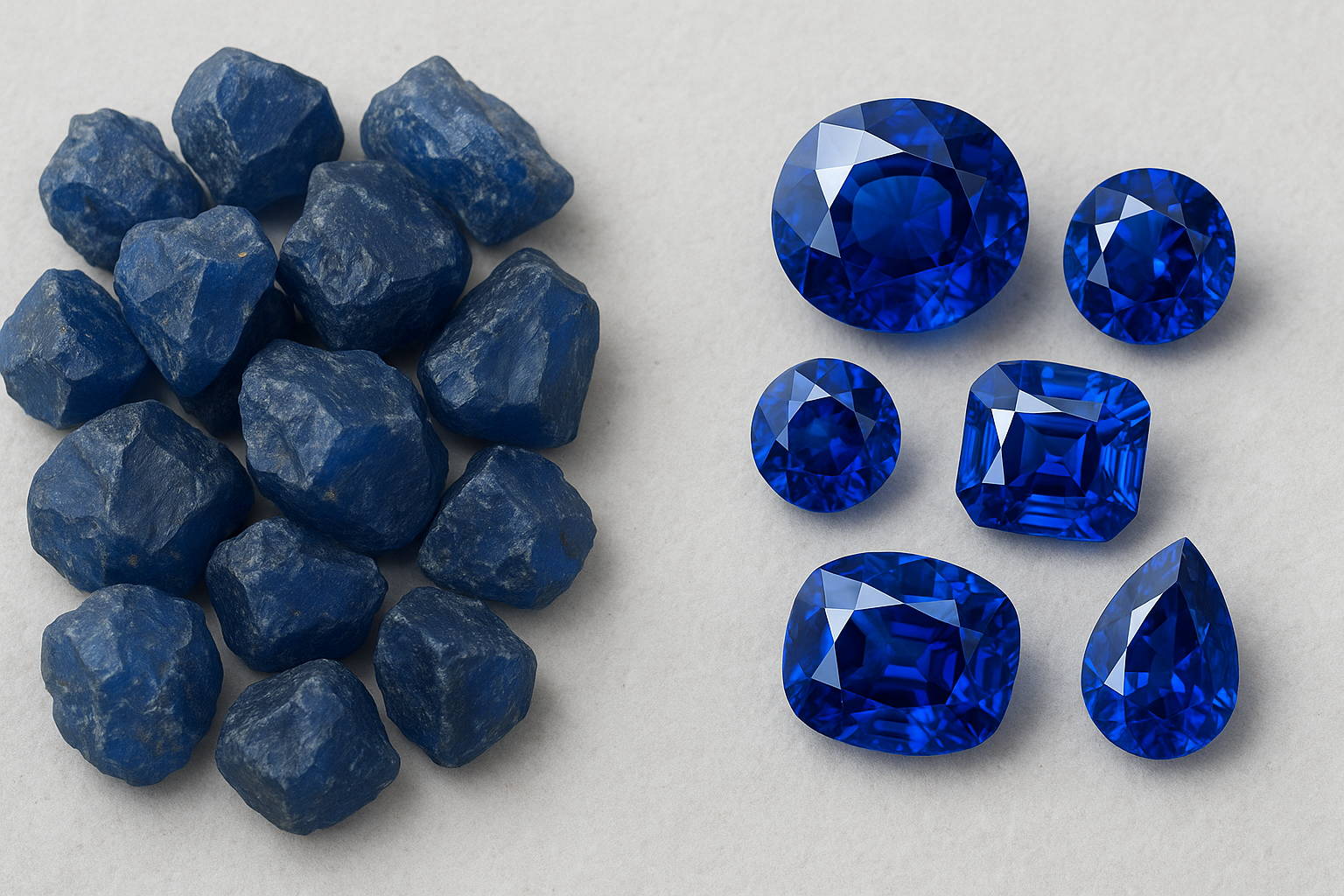Blue Sapphire Comparison - Natural v. FAB Lab-Grown
Sapphire, with its blues so "saturated and velvety," as GIA puts it, you'll be stepping in rhythm and swimming in deep in no time.
Color of the skies, color of the oceans. Admirers everywhere gravitating to what they are fond of most: nature.
The history of sapphire can be best surmised by GIA with the following words: "Traditionally, sapphire symbolizes nobility, truth, sincerity, and faithfulness. It has decorated the robes of royalty and clergy members for centuries. Its extraordinary color is the standard against which other blue gems--from topaz to tanzanite--are measured." And we all can attest to this knowing which stone rocked the finger of one Princess Di.
For her engagement in 1981, she smartly chose an 18-carat Oval sapphire as center piece to a surrounding cluster of diamonds. Word spread like wild fire and for quite a long while, too. Prior to the event, this kind of setting was rarely ever seen before and now, it’s one of the most imitated (a trend made timeless).
The ring now a family heirloom, presently sits pretty on the finger of Duchess of Cambridge, Princess Kate Middleton.
As blue sapphire is often looked to as the head hue of its group, we mustn't forget its relation to other well-known relatives in the bigger family of corundums such as ruby or white sapphire. A corundum is classified as aluminum oxide in its crystalline form, a rock-forming mineral with variances in transparency and color (and all basically take the title "sapphire" if not ruby red). Here's to no questioning that good looks run in this family.
Vivid, intense, and all other adjectives to describe such a royal color. GIA even states that it's as if light is emitted from within. Can we say it's lit?

Lab-grown Blue Sapphire
Fire & Brilliance is proud to shine as a recognized leader in the sparkling world of lab-grown gemstones! Our dazzling collection includes everything from vivid rubies and lush emeralds to mesmerizing alexandrite, serene aqua blue spinel, and sapphires in every color of the rainbow. FAB gems are truly a cut above!
FAB lab-grown blue sapphires are a stunning blend of science and sparkle! With their deep, oceanic blues and exceptional clarity, they rival the beauty of mined sapphires without the hefty price tag or environmental impact. Grown in high-tech labs, these gems are identical in composition to natural sapphires, just with a modern twist. Whether you're going bold or classic, FAB lab-grown blue sapphires bring timeless elegance with a fresh, ethical flair!
Our FAB Lab-Grown Colored Gems have the same physical, chemical, and optical properties as their mined counterparts. The only real difference is the origin: one comes from the earth, the other from a state-of-the-art lab.
One of the biggest perks of choosing a Fire & Brilliance lab-grown gem? Fewer inclusions. Since our gems are created in a controlled environment, they typically don’t have the internal flaws that natural stones often carry. These flaws may lead to cracks, cavities, and durability issues. Fewer inclusions mean stronger, longer-lasting sparkle.
the breakdown
natural
- Natural means rare, unique in nature--such as one's love for another.
- Inclusions are imperfections that some like to embrace as part of the mined gem culture, proof each gem is one of a kind
- Classic, has an old world charm to it
- Comes with a story
lab-grown
- Grown with the same physical, chemical, optical properties as natural
- Consistence in quality and color, not enhanced or color-treated
- More durable, same hardness.
- Little to no inclusions!
- Cost savings--sometimes dramatic, other times modest
- Smaller carbon footprint
Can you tell the difference visually from looking at both?
FEEL FREE TO MESSAGE US IF YOU HAVE ANY QUESTIONS. WE ARE HAPPY TO ASSIST.

